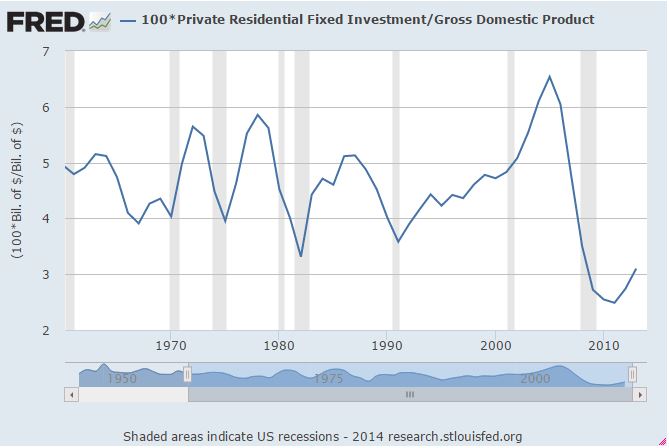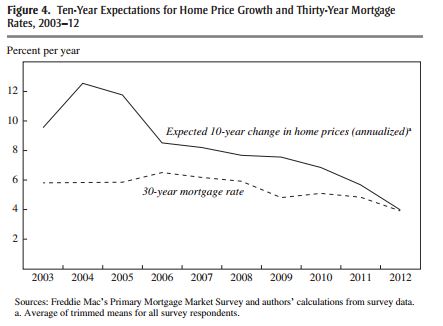I have often wondered whether the very low level of Private Residential Investment (also known as building houses) in the USA is due to unusually low expectations of long term increases in home prices. Here, I add that I would guess that the change was and end of the belief that the relative prices of houses has a strong upward trend (so houses are good investments) which belief is not supported by Robert Shiller’s data in Irrational Exuberance.
Of course I knew that, to find out, I should google something like ( Shiller house price expectations ). I forget what I told google but google sent me to this pdf.
Which you must read, but from which I will steal data on expectated house price increases over the next 10 years and this graph yes indeed, expected appreciation of house prices has dropped dramatically as one would expect given the bursting of the bubble. The question is does this explain the low level of residential investment ?

Note that Shiller thinks the relevant variable is the expected growth of home prices minus the mortgage interest rate. Unfortunately even he only has 10 observations of the expected growth of home prices over 10 years. It is easy to fit the ratio of private residential investment to GDP with this variable, but this may just be because it is easy to fit 10 observations.
It is mildly interesting that the difference alone seems to explain the huge change in residential investment without any need to appeal to financial frictions.

The more interesting question would be whether the relationship between the variables in recent years is the same as it was before the great recession. Alternatively, it is possible that some factor other than low home price increases is needed to explain low US residential investment. The natural candidate would be unusually tight lending standards as an over-reaction to the disasters caused by the extraordinarly loose lending standards of the early 00s.











Leave A Comment